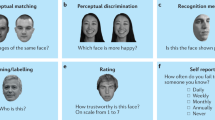Abstract
Forenames signify considerable information, not only about a person’s gender, but also about that person’s age, social class, and ethnicity, as well as characteristics such as attractiveness and intellectual competence. Kasof (1993) found that research (almost all done in the U.S.) often used gender-typed forenames to identify individuals’ sex or gender in studies of potential gender bias. However, because these forenames signified other traits unrelated to gender, results were confounded in ways often favoring male stimulus persons. To remedy this situation, Kasof identified pairs of female and male forenames that were matched on key variables such as perceived age, attractiveness, and intellectual competence. We found that since 1995, approximately one-third of researchers who manipulated the sex or gender of hypothetical women and men used Kasof’s matched female and male forenames to control for extraneous variables. However, our research with college students revealed that Kasof’s matched forename pairs are now outdated. College students rated Kasof’s forenames (which are characteristic of popular forenames of their parents’ cohort) as less attractive than their own cohort’s popular forenames. Consistent with Kasof’s results, however, popular male forenames continued to be rated as connoting greater intellectual competence than popular female forenames. Implications of these findings are discussed.
Similar content being viewed by others
References
Bryner, J. (2010, June 13). Good or bad, baby names have long-lasting effects. Retrieved from http://www.livescience.com
Buchanan, B. A., & Bruning, J. L. (1971). Connotative meanings of first names and nicknames on three dimensions. Journal of Social Psychology, 85, 143–144. https://doi.org/10.1080/00224545.1971.9918556.
Coffey, B., & McLaughlin, P. A. (2009). Do masculine names help female lawyers become judges?: Evidence from South Carolina. American Law and Economics Review, 11, 112–133. https://doi.org/10.1093/aler/ahp008.
Coffey, B., & McLaughlin, P. A. (2016). The effect on lawyers’ income of gender information contained in first names. Review of Law & Economics, 12, 57–76. https://doi.org/10.1515/rle-2014-0032.
Colman, A. M., Sluckin, W., & Hargreaves, D. J. (1981). The effect of familiarity on preferences for surnames. British Journal of Psychology, 72, 363–369. https://doi.org/10.1111/j.2044-.
Dion, K. L. (1985). Sex differences in desirability of first names: Another nonconscious sexist bias? Academic Psychology Bulletin, 7, 287–298.
Etaugh, C., & Bridges, J. (2018). Woman’s lives: A psychological exploration (4th ed.). New York: Routledge.
Etaugh, C., & Cummings-Hill, M. (1999, May). Does forename and surname attractiveness affect evaluations of professional competence? Paper presented at the meeting of the Midwestern Psychological Association, Chicago, IL.
Etaugh, C., & Roe, L. (2002, June). “What’s in a name”? Surname choice affects perceptions of women and men. New Orleans, LA: Poster presented at the meeting of the American Psychological Society.
Figlio, D. (2007). Boys named sue: Disruptive children and their peers. Education Finance and Policy, 2, 376–394. https://doi.org/10.3386/w11277.
Kasof, J. (1993). Sex bias in the naming of stimulus persons. Psychological Bulletin, 113, 140–163. https://doi.org/10.1037/0033-2909.113.1.140.
Leirer, V. O., Hamilton, D. L., & Carpenter, S. (1982). Common first names as cues for inferences about personality. Personality and Social Psychology Bulletin, 8, 712–718. https://doi.org/10.1177/0146167282084018.
Lieberson, S., Dumais, S., & Baumann, S. (2000). The instability of androgynous names: The symbolic maintenance of gender boundaries. American Journal of Sociology, 105, 1249–1287.
Mathews, T. J., & Hamilton, B. E. (2002). Mean age of mothers, 1970-2000. National vital statistics report; vol.51, no.1. Hyattsville, MD: National Center for Health Statistics.
Mathews, T. J., & Hamilton, B. E (2016). Mean age of mothers is on the rise: United States, 2000–2014. NCHS data brief, no.232. Hyattsville, MD: National Center for Health Statistics.
Mehrabian, A. (1990). The name game. Bethesda, MD: National Press Books.
Mehrabian, A. (1992). Interrelationships among name desirability, name uniqueness, emotion characteristics connoted by names, and temperament. Journal of Applied Social Psychology, 22, 1797–1808. https://doi.org/10.1111/j.1559-1816.1992.tb00977.x.
Mehrabian, A. (2001). Characteristics attributed to individuals on the basis of their first names. Genetic, Social, and General Psychology Monographs, 27, 59–88.
NCFMR Family profiles. (2011). Fatherhood in the U.S.: Men’s age at first birth1987-2010. FP-11-04. Bowling Green, OH: Bowling Green State University.
Pilcher, J. (2017). Names and “doing gender”: How forenames and surnames contribute to gender identities, difference, and inequalities. Sex Roles, 77, 812–822. https://doi.org/10.1007/s11199-017-0805-4.
Robnett, R. (2017). Overcoming functional fixedness in naming traditions: A commentary on Pilcher’s “names and ‘doing gender’”. Sex Roles, 77, 823–828. https://doi.org/10.1007/s11199-017-0838-8.
Social Security Administration. (2014). Popular baby names. Retrieved from https://www.ssa.gov/oact/babynames. Accessed 14 Jun 2014
Steiner, P. M., Atzmuller, C., & Su, D. (2016). Designing valid and reliable vignette experiments for survey research: A case study on the fair gender income gap. Journal of Methods and Measurement in the Social Sciences, 7, 52–94. https://doi.org/10.2458/v7i2.20321.
Violanti, M. T., & Jurczak, L. P. (2011). The effect of sex and gender on perceptions of leaders: Does situation make a difference. Advancing Women in Leadership, 31, 45–56. https://doi.org/10.18738/awla1.31i0.84.
Zajonc, R. B. (2001). Mere exposure: A gateway to the subliminal. Current Directions in Psychological Science, 10, 224–228. https://doi.org/10.1111/1467-8721.00154.
Zhao, X., & Biernat, M. (2017). “Welcome to the U.S. but change your name”? Adopting Anglo names and discrimination. Journal of Experimental Social Psychology, 70, 59–68. https://doi.org/10.1016/jesp.2016.12.008.
Author information
Authors and Affiliations
Corresponding author
Ethics declarations
The co-authors have complied with all ethical standards in carrying out and submitting this researchproject
Electronic supplementary material
ESM 1
(DOCX 47 kb)
Rights and permissions
About this article
Cite this article
Etaugh, C., Geraghty, C. Both Gender and Cohort Affect Perceptions of Forenames, but Are 25-Year-Old Standards Still Valid?. Sex Roles 79, 726–737 (2018). https://doi.org/10.1007/s11199-018-0903-y
Published:
Issue Date:
DOI: https://doi.org/10.1007/s11199-018-0903-y




